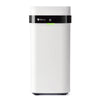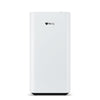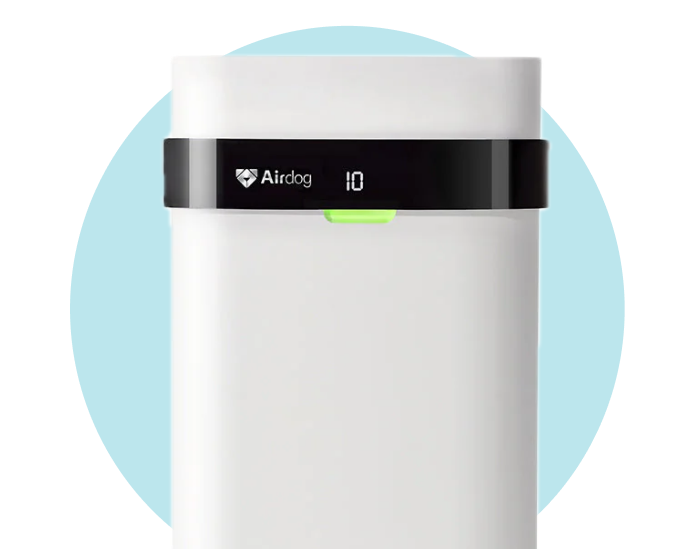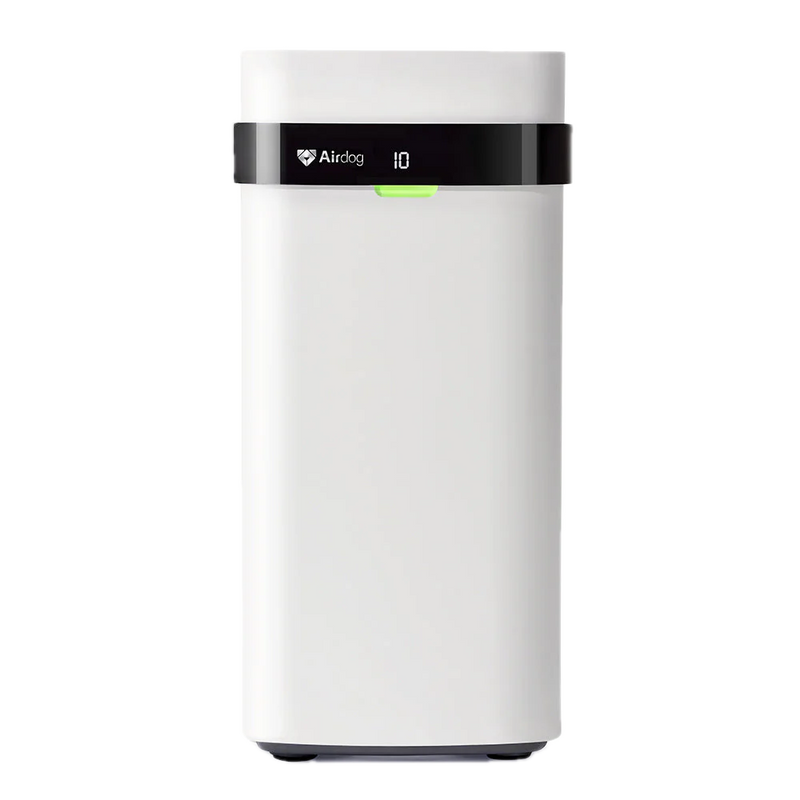In this guide, we’ll delve into filter replacement schedules, discuss the factors that impact the longevity of air purifier filters, and share tips for maintaining them. By following these best practices, you can ensure your air purifier continues to deliver fresh, purified air for years to come.
Why Is Regular Filter Replacement Necessary?
The air purifier filter is the core component of any air purification system. It traps pollutants like dust, pollen, pet dander, and other particles, leaving only clean air to circulate. Over time, the filter becomes clogged with debris, reducing the unit's efficiency and the overall quality of your indoor air.
The Benefits of Changing Air Purifier Filters on Time
- Improved Air Quality: Regular filter replacement ensures the unit captures pollutants effectively, providing rejuvenated air.
- Maintains Optimal Performance: Clean filters allow for smooth airflow and prevent strain on the unit's fan.
- Promotes Health: By eliminating allergens and small particles, clean filters reduce exposure to indoor air pollution, helping allergy sufferers breathe easier.
How Often Should You Change Air Purifier Filters?
The frequency of replacing your air filters varies depending on several factors, such as the type of filter, how frequently you use the purifier, and the air quality in your home. Below are general guidelines based on filter types:
1. HEPA Filters
HEPA filters are designed to capture 99.97% of airborne particles as small as 0.3 microns, including dust, mold spores, and allergens.
- Replacement Interval: Every 6–12 months.
- For Allergy Sufferers: If your household has pets or you experience frequent allergies, replace HEPA filters more often to maintain clean air.
2. Activated Carbon Filters
Activated carbon filters specialize in absorbing odors, gases, and volatile organic compounds (VOCs).
- Replacement Interval: Every 3–6 months.
- Environmental Consideration: Frequent exposure to cooking smells, smoke, or cleaning products can saturate these filters faster.
3. Pre-Filters
Pre-filters are the first line of defense in capturing larger particles like dust and hair, extending the life of the primary filters.
- Maintenance: Clean or vacuum pre-filters every 1–3 months and replace them as needed.
4. Washable Filters (e.g., Airdog TPA® Filters)
Washable filters are reusable and eco-friendly alternatives to traditional disposable filters.
- Maintenance: Wash and dry the filters every 1–2 months to maintain optimal air filtration.
Factors That Influence How Often to Change Air Purifier Filters
How often you need to replace or clean your air purifier filters depends on several factors:
1. Indoor Air Quality
Homes with high levels of indoor air pollution—caused by pets, smoking, or frequent cooking—can clog filters more quickly.
2. Outdoor Air Quality
If you live in an area with poor air quality outdoors, such as near a busy road or in a city prone to smog, your filters will need to be replaced more frequently.
3. Frequency of Use
- Continuous Use: Running your air purifier 24/7 ensures maximum air purification but fills filters faster.
- Occasional Use: Filters in purifiers used only a few hours a day may last longer.
4. Room Size
Large rooms or spaces with high ceilings require more air circulation, which can shorten the lifespan of your filters.
5. Environmental Factors
Seasonal changes, such as pollen surges in spring, may increase the need for filter replacement to handle the added strain.
Signs Your Air Filter Needs Replacing
While most air purifiers come with manufacturer guidelines, certain signs indicate it’s time to clean or change the filter:
- Clogged Filter: If the filter is visibly dirty or clogged with dust, it can no longer capture pollutants effectively.
- Reduced Airflow: Weak airflow indicates the fan is working harder due to a dirty filter.
- Persistent Odors: Activated carbon filters that no longer remove smells may need to be replaced.
- Worsened Allergies: Increased sneezing, coughing, or allergy symptoms can indicate reduced air quality caused by a dirty filter.
- Filter Change Indicators: Many air filtration units have sensors or indicator lights to alert you when it’s time for a replacement.
The Risks of Neglecting Filter Replacement
Failing to replace air purifier filters regularly can lead to several problems, including:
- Poor Air Quality: Clogged filters can no longer effectively trap pollutants, allowing dust, pet dander, and allergens to circulate indoors.
- Increased Energy Usage: Dirty filters force the purifier’s motor to work harder, consuming more electricity and potentially shortening the unit’s lifespan.
- Health Issues: Exposure to untreated air can exacerbate asthma, allergies, and other respiratory conditions.
Tips for Maintaining Air Purifier Filters
Many air purifiers come with maintenance instructions, but to ensure your air purifier delivers effective air purification, follow these general maintenance tips:
- Inspect Filters Frequently: Check the filter monthly for visible signs of dirt or clogging.
- Wash Washable Filters: Rinse washable filters, like Airdog’s TPA filters, with water and allow them to dry completely before reinserting.
- Vacuum Pre-Filters: For purifiers with pre-filters, vacuuming them regularly helps improve airflow and extend the life of the main filter.
- Follow the Manufacturer’s Instructions: Always consult the air purifier’s manual for specific care recommendations.
- Stock Up on Replacement Filters: Having spare filters on hand ensures you can replace them promptly.
How Clean Filters Improve Indoor Air Quality
Maintaining your air purifier filters provides a range of benefits:
1. Removes Pollutants
Filters capture dust, allergens, and airborne particles, significantly reducing indoor air pollution.
2. Neutralizes Odors
Activated carbon filters trap VOCs and odors from pets, smoke, and cooking, ensuring fresher air.
3. Improves Sleep Quality
Cleaner air helps you breathe easier, promoting better sleep and overall well-being.
4. Supports a Healthy Immune System
Eliminating airborne particles like mold spores and small particles reduces strain on your immune system.
Airdog: Simplifying Filter Maintenance
Airdog air purifiers use cutting-edge TPA® technology, eliminating pollutants rather than trapping them. Their washable filters offer a sustainable and cost-effective solution for maintaining clean air.
Key Benefits of Airdog Filters
- Eco-Friendly: Washable filters reduce waste, making Airdog purifiers environmentally friendly.
- Cost-Effective: Reusable filters save money compared to disposable options.
- Superior Air Quality: Airdog’s advanced filtration system destroys pollutants, ensuring optimal indoor air quality.
Conclusion
Understanding how often to change your air purifier filter is essential for maintaining clean air, enhancing indoor air quality, and ensuring your purifier operates efficiently. By following recommended maintenance schedules, recognizing signs of wear, and using innovative solutions like Airdog’s washable filters, you can enjoy purified air without the hassle of frequent filter replacements.
Transform your indoor air with Airdog. Visit Airdog USA to explore our revolutionary air purification products.





